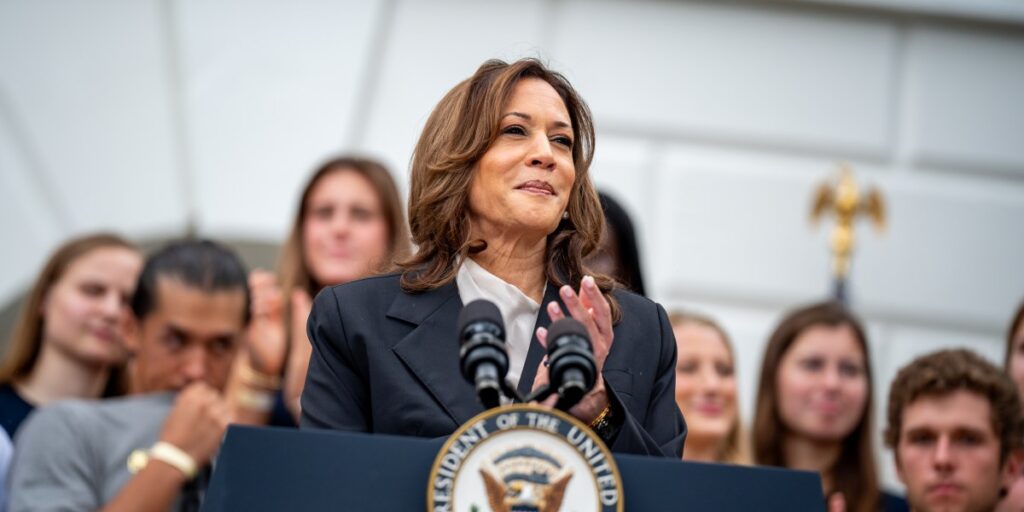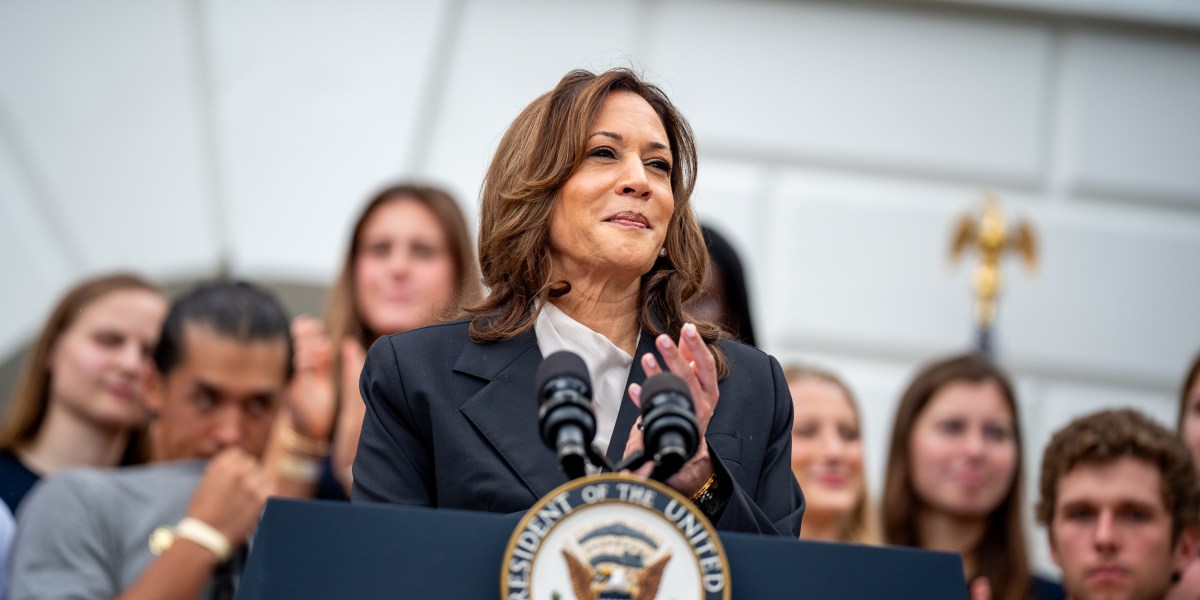The rise of Kamala Harris proves Indian-Americans’ winning bet on assimilation is paying off
Indian-Americans have served at all levels of government. Their secret? Assimilation.


Born to a Jamaican-American father and an Indian-American mother, Kamala Harris’s rise to become the presumptive presidential nominee for the Democratic Party marks a historic milestone for these communities and our country—but Indian-Americans have punched above their demographic weight in politics for some time.
Indian-Americans have served as governors, senators, congresspeople, and at all levels of government—from the surgeon general to key roles in the U.S. Department of Treasury and the Federal Reserve to the sitting head of the White House Office of Science and Technology Policy. This is quite the list given that immigrant and native-born Indians make up less than 2% of the population of the United States.
The rise of Kamala Harriss to become a major party presidential candidate is a signal that Indian-Americans are no longer just passive observers—they are now active participants in shaping the nation’s future. Kamala is not alone. In the Republican Party, Nikki Haley remains a prominent voice, and Vivek Ramaswamy has exerted a strong influence on the direction of the party’s policies and rhetoric. On the Democratic side, Representative Ro Khanna of California is seen as a rising star. Representative Pramila Jayapal has become one of the leading voices on the more liberal side of the Democratic Party.
These leaders have made their impact while maintaining a dual identity, fully embracing global Indian culture while also fully embracing their American citizenship and the American way of life. What’s their secret? The key differentiator in the success of Indians in politics is their exceptional ability to assimilate while maintaining their cultural heritage. Assimilation has been crucial in Indian-Americans’ ability to connect with the broader population and gain their trust and support while at the same time remaining true to their genuine roots. More importantly, this duality allows them to bring a diverse set of ideas and solutions to the table, enriching the political discourse and contributing to more inclusive governance.
The uniquely fluid and accepting nature of Anglo-Saxon societies makes this kind of assimilation without loss of culture possible. Outside the echo chamber of online media and extreme political views, America is growing more diverse by the day. It has also become more integrated, with a higher rate of interracial marriages. We remain a welcoming country built by immigrants.
At the same time, the idea of embracing one’s roots and culture has never been more common and acceptable. From Irish-Americans and Italian-Americans to Haitian-Americans and more, U.S. citizens take great pride in their roots. Yet, with few exceptions, this does not generate challenges to their national allegiance. There is room in the big tent of America for all. Indian-Americans have benefited from these two American traits and, as they grew more and more comfortable with their new home, have grown more comfortable with stepping into public roles.
We see a similar trend in other countries where Indian communities are strong and the national culture is, by and large, welcoming. In Ireland and the United Kingdom, no one bats an eye when an Indian politician is elected. In the U.K., despite the recent political turmoil, the contributions of Indian-origin politicians such as Rishi Sunak, the last Conservative Prime Minister, and Priti Patel, the former Home Secretary, showcase the significant roles Indians are playing in one of the world’s oldest democracies. In Ireland, Leo Varadkar, who is of Indian descent, serves as the Tánaiste and has previously served as Taoiseach.
The severe anti-immigrant backlash in Europe, particularly in countries such as Sweden, Germany, France, and the U.K., highlights the consequences of a lack of assimilation and integration. In these countries, it has led to significant social friction and political unrest. However, you will never see Indians creating unrest—they have shown a unique ability to embrace the values, culture, and ethos of their adopted countries.
Assimilation does not mean abandoning one’s cultural heritage. On the contrary, successful Indian politicians have demonstrated that it is possible to celebrate one’s roots while embracing new cultural norms. Rishi Sunak and Vivek Ramaswamy both take great pride in their Hindu religion and frequently talk about this.
In a world increasingly divided by cultural and political differences, the success of Indians in politics serves as a beacon of hope. It shows that with hard work, education, and a willingness to embrace new values, immigrants can overcome barriers and achieve remarkable success. This journey of assimilation and enhancement is not just the secret to their success but a valuable lesson for all.
More must-read commentary published by Fortune:
The opinions expressed in Fortune.com commentary pieces are solely the views of their authors and do not necessarily reflect the opinions and beliefs of Fortune.





